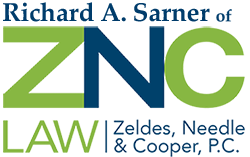With the end of the year approaching fast, now is the time to consider ways to reduce your 2014 income tax bill. In this issue you will learn:
- How charitable trust-based planning can be used to reduce your taxable income.
- If you are the Trustee or beneficiary of an irrevocable, non-grantor trust (such as a Bypass Trust or Dynasty Trust), how distributions, trust reformation or decanting, and investment shifting can be used to reduce the trust’s taxable income.
If you would like to learn more about these trust-focused, income-reducing strategies, please call our office now.
A Quick Review of the Federal Income Tax Laws
Significant changes to federal income tax laws went into effect in 2013, including:
- Raising the top tax bracket from 35% to 39.6%. In 2014, this top rate applies as follows:
-
Married couples filing jointly or qualifying surviving spouses with taxable income above $457,600
-
Heads of households with taxable income above $432,200
-
Married individuals filing separately with taxable income above $228,800
-
Single individuals with taxable income above $406,750
-
Trusts and estates with taxable income above $12,500
-
- Increasing the long-term capital gains rate on the top tax bracket from 15% to 20%
- Applying a 3.8% surtax on the lesser of net investment income or modified adjusted gross income for individual taxpayers earning as follows:o Married couples filing jointly or qualifying surviving spouses, $250,000
-
Married individuals filing separately, $125,000
-
Single individuals or heads of households, $200,000
-
- Applying a 3.8% surtax on trusts and estates on the lesser of undistributed net investment income or adjusted gross income over $12,500 (in 2014)
This means that the top tax rate could be as high as 43.4% for certain taxpayers. Therefore, it is important to understand how these new laws impact you and what can be done to reduce your income tax liability.
Planning Tip: Since each taxpayer’s circumstances are unique, planning to minimize taxable income is not one-size-fits all, or even most. We are available now to discuss your personal situation and help you explore the options for reducing your income tax bill.
Charitable Trust-Based Tax Reduction Strategies
While you may be familiar with Charitable Remainder Trusts (CRTs) as an estate planning technique used to minimize estate taxes, CRTs are also effective in reducing income taxes under the right circumstances.
A CRT is a type of irrevocable trust that pays an annual distribution to one or more individual beneficiaries for a term of years, after which the balance of the trust passes to one or more charitable organizations.
The income tax deduction for contributions to a CRT is limited based on several factors, including a taxpayer’s adjusted gross income, the taxpayer’s other charitable giving, and what assets are used to fund the CRT. Aside from being able to take a limited income tax deduction over five years for the value of the property transferred into a CRT, a CRT can be used to reduce your income tax bill in the following situations:
- Avoiding a Large Capital Gain. If you anticipate recognizing a large capital gain on an appreciated asset, such as the sale of your business, you can transfer the asset into a CRT which then sells it. You will not recognize any capital gain on the sale. In addition, payment of the annual distribution is only taxed when you receive it, which spreads the income over a number of years.
- Shifting Income to the Next Generation. If you will not need the income from an income-producing asset, you can provide an income stream for your children by transferring the property into a CRT. This shifts the taxable income down to the next generation, who are most likely in a lower income tax bracket.
- Planning for Retirement Income. A Net Income with Makeup Charitable Remainder Trust (NIMCRUT) can be used to invest for tax-deferred growth while you are still working and will not need investment income. After you retire, the CRT assets can be invested to replace your lost income.
Planning Tip: You should consider a CRT if you have charitable intent and substantial investable assets that are expected to increase in value and you will not need to rely on the income from these assets. If this describes your situation, please call our office now so that we can help determine if any of these CRT strategies are right for you.
How to Avoid the Income Tax Squeeze on Trusts
As mentioned above, irrevocable, non-grantor trusts (such as Bypass Trusts and Dynasty Trusts) are subject to highly compressed income tax brackets (in 2014, the top 39.6% tax rate kicks in at only $12,500 of trust income). In addition, trusts in the top tax bracket are subject to the 20% long-term capital gains rate and the 3.8% surtax.
As part of their fiduciary responsibilities, Trustees of this type of trust must carefully consider ways to reduce the trust’s taxable income. After taking into consideration the terms of the trust agreement, the ongoing needs and tax status of the trust beneficiaries, and applicable state law, income-reducing strategies Trustees should consider include:
- Distributing income to beneficiaries so that the income is taxed in the beneficiaries’ lower bracket
- Making in-kind distributions of low basis assets to beneficiaries
- Invoking the 65-day rule and distributing trust income to beneficiaries by March 6, 2015, which will allow the trust to deduct the income as a 2014 distribution
- Exploring options to permit capital gains to pass to beneficiaries, such as reforming or decanting the trust to broaden the Trustee’s discretion to allocate between income and principal
- Shifting investments to minimize taxable income and gains
- Merging or terminating small, uneconomic trusts
Planning Tip: Trustees must weigh the tax benefits of making distributions and changes to the trust’s provisions against the grantor’s intent, the ongoing requests of the current beneficiaries, and what will be left for the remainder beneficiaries. If you are the Trustee or beneficiary of an irrevocable, non-grantor trust, we can analyze your trust’s 2014 tax liability and help evaluate the options for minimizing the trust’s taxes.
Final Advice for Individuals and Trustees
Planning to reduce income taxes is a balancing act. The needs of the individual taxpayer or trust beneficiary must carefully be weighed against the overall tax savings. In addition, income, gains, losses, and tax brackets must be reviewed annually since the expenses of the individual or beneficiary will change from year to year. We are available now to answer your income-tax planning questions and help determine the right strategies for reducing your income tax bill.
For more information about this article, contact the Law Offices of Richard Sarner.










